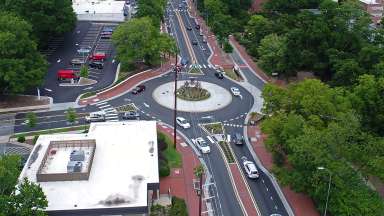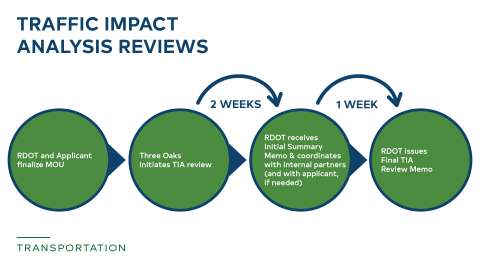Jump To:
As of July 1, 2024, the Raleigh Department of Transportation (RDOT) is implementing a new Traffic Impact Analysis (TIA) review process. Instead of reviewing TIAs in-house, the city will utilize an on-call consultant, Three Oaks Engineering, to conduct TIA reviews. This update to the TIA review process will expand RDOT capacity and help ensure a consistent review timeline.
Per the new review process, the City’s review turnaround time will be approximately six (6) weeks from the date of TIA submittal.
- Continuing current practice, RDOT will scope the TIA with the applicant team (and NCDOT where applicable).
- The complexity and unique context of some sites may require an extended timeline. This will be communicated with the applicant as soon as possible during the review process.
As part of the current adopted fee schedule (FY25), effective July 1, 2024, there are two fees associated with the City’s review of TIAs.
- Developments that require a TIA as part of an application to the City are now subject to a $2,500 review fee per submittal.
- Any addendum reviews would generate a $1,000 fee per submittal.
- Applicants can receive invoices for these fees and process payments through the Permit Portal.
The new TIA review process and timeline is summarized in the graphic below.

